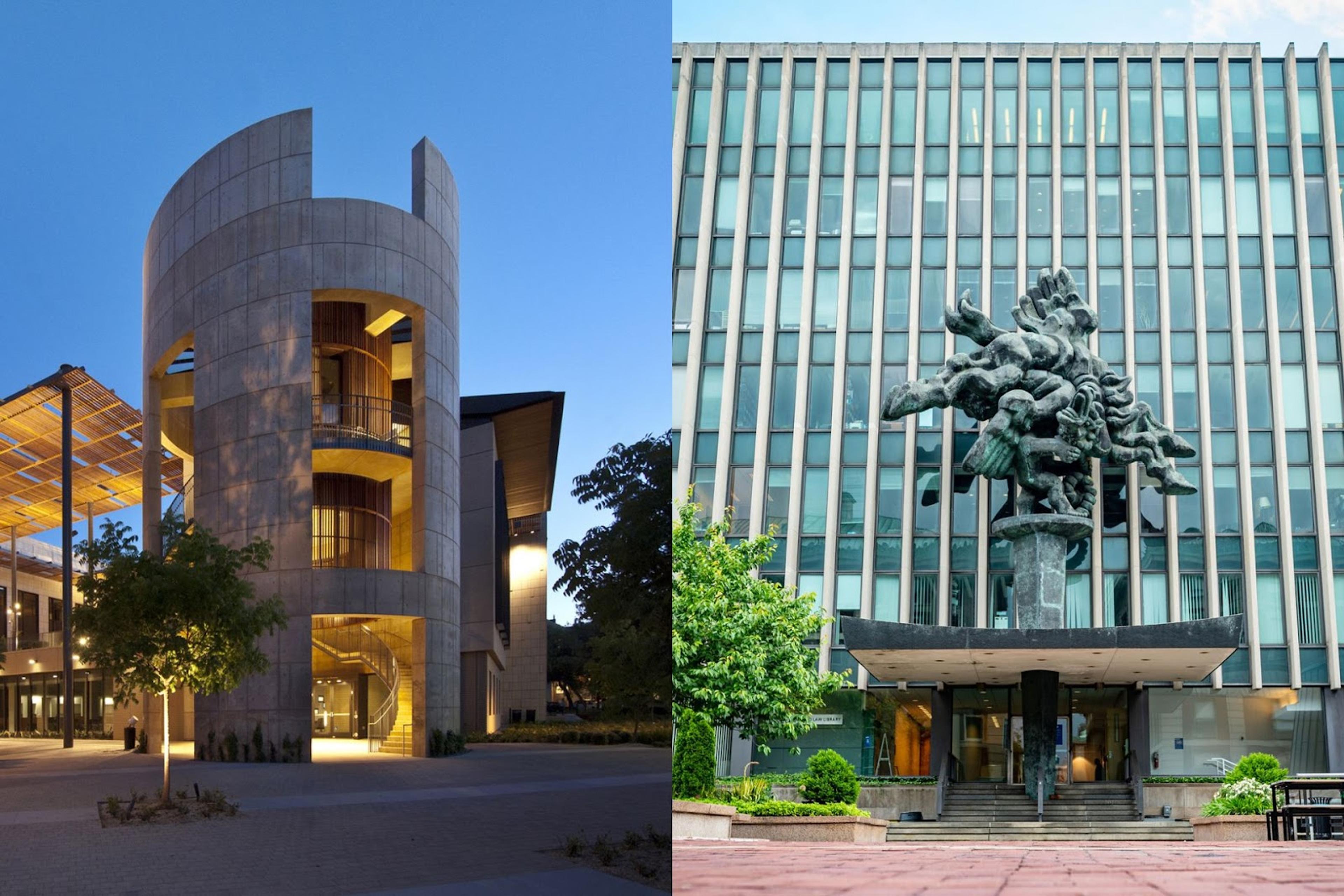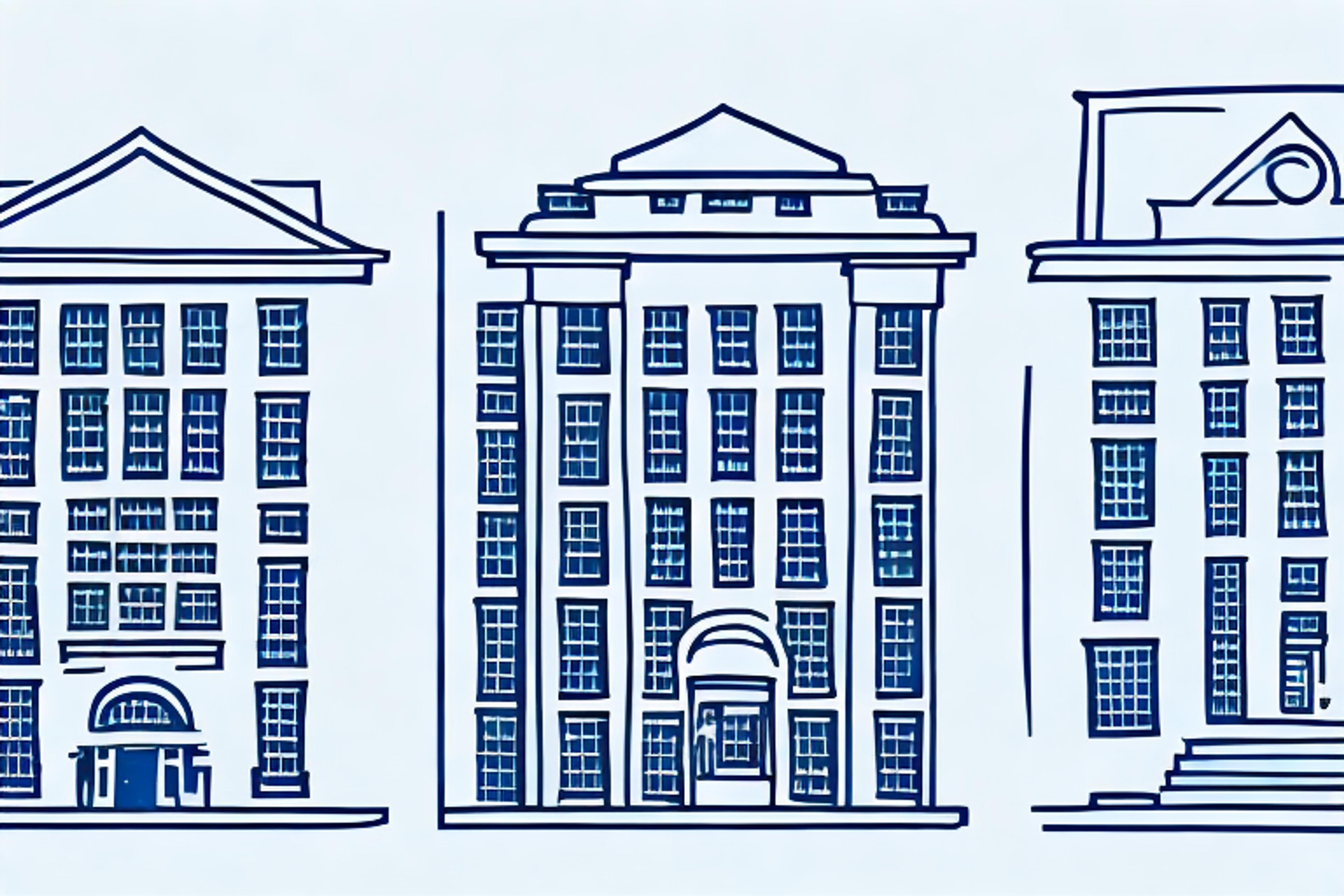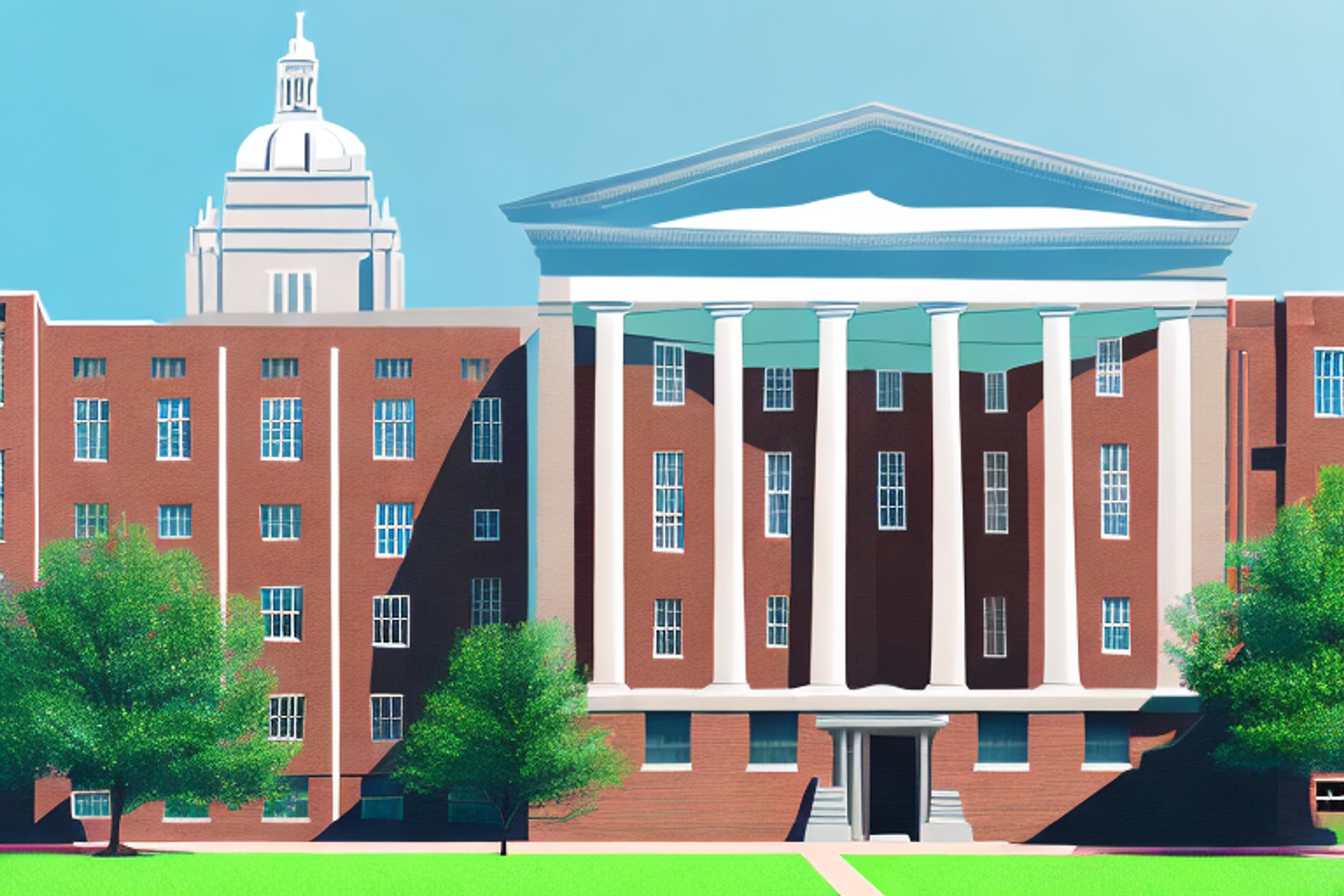University of Virginia School of Law Vs. University of Michigan--Ann Arbor Law School: An In-Depth Comparison
Are you considering attending law school but can't decide between the University of Virginia School of Law and the University of Michigan--Ann Arbor Law School? Look no further! Our in-depth comparison breaks down everything from curriculum to campus culture to help you make an informed decision.
Posted March 6, 2025

Table of Contents
Free Event

Featuring Indrani S.
Law School Admissions: What to do when you are waitlisted
Starting Tuesday, April 8
11:30 PM UTC · 60 minutes

Featuring Indrani S.
Choosing the right law school is a critical decision for aspiring lawyers. It can shape your career prospects, professional network, and legal training. In this article, we'll conduct an in-depth comparison of two top law schools in the United States - the University of Virginia School of Law and the University of Michigan-Ann Arbor Law School. We'll delve into factors such as faculty, curriculum, teaching methodology, student body, career prospects, and more to help you make an informed decision about which law school is right for you.
Introduction: Understanding the Importance of Choosing the Right Law School
Law school is an essential step in a lawyer's educational journey. It equips students with legal knowledge, skills, and experience, which they need to practice law successfully. Law school is also an investment - both in terms of time and money. Therefore, choosing the right law school is crucial for aspiring lawyers. This article will compare the University of Virginia School of Law and the University of Michigan-Ann Arbor Law School, to help you make an informed decision.
When choosing a law school, it's important to consider factors beyond just the school's reputation and ranking. Location, for example, can play a significant role in your law school experience. The University of Virginia School of Law is located in Charlottesville, Virginia, a small town with a tight-knit community. In contrast, the University of Michigan-Ann Arbor Law School is located in a bustling college town with a larger student population. Additionally, the curriculum and faculty at each school may differ, so it's important to research and compare these factors as well.
Location and Campus: Comparing Charlottesville and Ann Arbor
The location and campus of a law school can impact student life, social opportunities, and even employment prospects. University of Virginia School of Law is situated in Charlottesville, Virginia- a small and historic city known for its scenic beauty, culture, and colonial architecture. It's a great place to study law, with nearby hiking trails, music venues, and restaurants. On the other hand, the University of Michigan-Ann Arbor is located in Ann Arbor- a college town that's bursting with energy, tradition, and innovation. Ann Arbor is known for its vibrant arts scene, assorted dining options, and lively student culture. When it comes to campus, both law schools have state-of-the-art facilities, with ample study areas, cutting-edge technology, and comfortable classrooms.
One major difference between the two locations is the climate. Charlottesville experiences all four seasons, with hot summers and cold winters. Ann Arbor, on the other hand, has a more temperate climate, with mild summers and snowy winters. This can be a factor to consider for students who prefer a certain type of weather.
Another difference is the proximity to major cities. Charlottesville is located about two hours from Washington D.C., while Ann Arbor is only about 45 minutes from Detroit. This can be important for students who are interested in networking opportunities or internships in a specific city.
Faculty: Comparing the Profiles and QualificationsOf Professors
The faculty of a law school plays a significant role in shaping students' legal education. The University of Virginia School of Law has a distinguished faculty, with renowned scholars, experienced practitioners, and jurists. Professors at UVA Law are actively involved in legal scholarship, research, and advocacy. The faculty includes former US Supreme Court clerks, federal judges, and prominent legal scholars. On the other hand, the University of Michigan-Ann Arbor Law School has a diverse faculty, with a mixture of interdisciplinary experts and practicing attorneys. Several faculty members at Michigan Law are also leading scholars in their fields of expertise, publishing papers and appearing in national conferences.
Curriculum: Analyzing the Courses Offered at Both Law Schools
The curriculum of a law school is the fountainhead of legal knowledge and expertise. Both the University of Virginia School of Law and the University of Michigan-Ann Arbor Law School offer a wide range of courses covering various legal fields. UVA Law has an extensive curriculum with more than 300 courses, including courses on intellectual property, international law, antitrust law, and corporate law. The University of Michigan-Ann Arbor Law School offers more than 200 courses with an emphasis on traditional legal areas, such as property law, constitutional law, and criminal law. Both law schools offer opportunities for specialization in specific legal fields with advanced courses, clinical programs, and externships.
Teaching Methodology: Comparing Pedagogical Approaches
Teaching methodology can vary among law schools and can significantly impact students' learning experiences. The University of Virginia School of Law adopts a case-method approach, which emphasizes the close study of court opinions and legal reasoning. In contrast, the University of Michigan-Ann Arbor Law School uses a more traditional Socratic approach where students are challenged with rigorous questioning. Michigan Law's approach leads to students' active participation in class discussions, increasing their critical thinking and communication skills. Both law schools use a mixture of lectures, seminars, and small-group discussions to facilitate learning. The teaching staff at both institutionsare committed to nurturing critical thinking, careful analysis, and ethical awareness in their students.
Student Body: Examining Diversity and Admission Statistics
The student body of a law school affects the learning environment, class composition, and overall experience. The University of Virginia School of Law has a relatively smaller class size of around 325 students, with a 51:49 male-female ratio. UVA Law attracts students from diverse backgrounds, with 12% of the class being international students and a notable increase in minority enrollment in recent years. The University of Michigan-Ann Arbor Law School has an incoming class size of approximately 300 students, with a higher proportion of female students than UVA Law. Michigan Law has a diverse student population, with 30% of the class being students of color, and a sizeable international student community.
Career Prospects: Analyzing Employment Rates, Salaries, and Job Opportunities Post-Graduation
Career prospects are a critical factor to consider when selecting a law school. The employment outlook for graduates from the University of Virginia School of Law is outstanding, with over 95% of graduates securing employment post-graduation. Graduates of UVA Law are employed in prestigious law firms, federal clerkships, government agencies, and corporate legal departments, with an average starting salary of $180,000. The University of Michigan-Ann Arbor Law School also has an impressive employment record, with over 85% of graduates finding employment post-graduation. Students from Michigan Law are working in a diverse range of legal fields, including public interest, private practice, and government entities, with an average starting salary of $170,000.
Internship and Clinical Programs: Comparing Experiential Learning Opportunities at Both Schools
Internship and clinical programs provide law students with hands-on legal experience, exposure to real-world legal issues, and networking opportunities with legal professionals. The University of Virginia School of Law offers a wide range of experiential learning opportunities, including clinical programs, externships, and internships with firms, nonprofits, and government agencies. Students can work with legal clinics on animal law, domestic violence, immigration law, and entrepreneurship law, among others. The University of Michigan-Ann Arbor Law School also provides ample opportunities for experiential learning, with a plethora of clinical courses offered, including civil rights, human trafficking, environmental law, and entrepreneurship. Michigan Law students can also participate in fellowship programs, legal clinics, and other externships.
Research and Scholarship Opportunities: Analyzing Resources Available for Students to Conduct Independent Research
Research and scholarship opportunities are important for law students, as they provide a platform for developing advanced legal skills, building a legal network, and creating a professional profile. The University of Virginia School of Law offers several research opportunities, including the annual Colloquium on Legal and Constitutional History, which brings legal scholars from all over the world to discuss legal history. UVA Law students also have access to the Arthur J. Morris Law Library, which has extensive legal resources and collections. The University of Michigan-Ann Arbor Law School has a robust research program, with initiatives such as the Program in Race, Law & History, Corporate Law and Finance Program, and a Law and Economics Workshop. Michigan Law students can access a range of legal resources, including the Law Library, which has a diverse collection of books, journals, and electronic resources.
Student Life: Comparing Extracurricular Activities, Social Events, and Campus Culture
Student life is an essential aspect of the law school experience, as it can impact the social network, extracurricular activities, and overall well-being of students. The University of Virginia School of Law has a vibrant campus culture, with a range of student-led organizations, such as the Virginia Law & Business Society, the Virginia Sports Law Society, and the Virginia Law Veterans. UVA Law also hosts several social events, including the Formal Ball, Barrister's Ball and SpringFest. The University of Michigan-Ann Arbor Law School is also known for its lively campus culture, with numerous student organizations such as Michigan Business and Entrepreneurial Law Society, the Michigan Immigration and Labor Law Association, and the Michigan Law ACLU. Michigan Law students can also participate in social events such as the annual State Street Art Fair and the homecoming football game.
Alumni Network: Examining the Reach and Impact of Graduates from Both Law Schools
The alumni network of a law school can impact students' career prospects, networking opportunities, and legal reputation. Both the University of Virginia School of Law and University of Michigan-Ann Arbor Law School have extensive alumni networks, with graduates working in leading law firms, multinational corporations, and public service organizations. UVA Law has an alumni base of over 20,000 graduates, with notable alumni such as Senator Tim Kaine, Virginia Governor Ralph Northam, and Pulitzer Prize-winner Dahlia Lithwick. Michigan Law's alumni network is similarly impressive, with over 23,000 graduates, including prominent legal figures such as Supreme Court Justice William R. Day, U.S. Senator Carl Levin, and legal scholar Cass Sunstein.
Cost of Attendance: Comparing Tuition Fees, Housing, and Living Expenses
Cost of attendance is an important factor to consider when selecting a law school, as it can impact student debt, financial aid, and overall affordability. The University of Virginia School of Law's total cost of attendance for in-state students is approximately $86,000 per year, including tuition, fees, and living expenses. However, UVA Law offers need-based scholarships, merit-based scholarships and grants to students to offset the cost of attendance. The University of Michigan-Ann Arbor Law School's total cost of attendance for in-state students is approximately $88,000 per year, including tuition, fees, and living expenses. Michigan Law offers several merit-based and need-based scholarships to students to offset the cost of attendance.
Conclusion: Which Law School is the Right Fit for You?
The comparison between the University of Virginia School of Law and the University of Michigan-Ann Arbor Law School shows that both law schools have outstanding faculties, rigorous curriculums, and excellent career prospects. Aspects such as location, teaching methodology, student body, and cost of attendance can also be considered when selecting a law school. Ultimately, the decision of which law school to attend should be based on individual preferences, career goals, and personal fit. We hope this in-depth comparison has provided you with valuable insights to help you make an informed decision.











